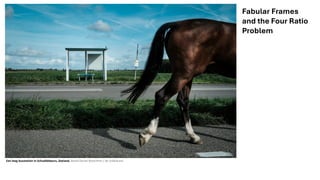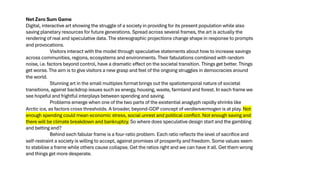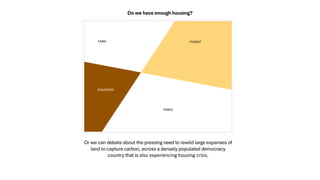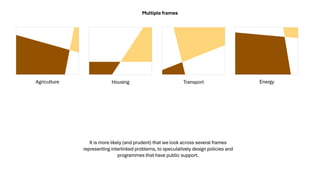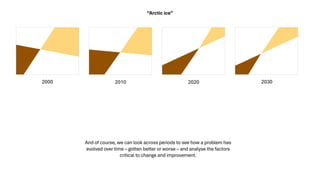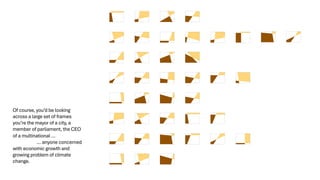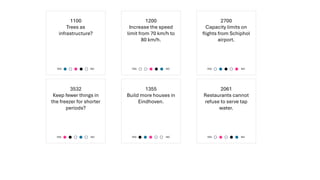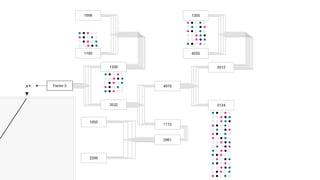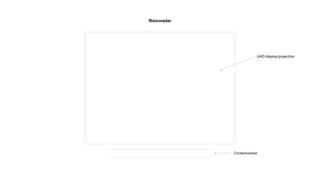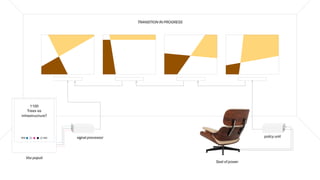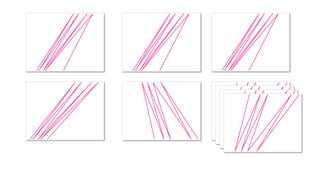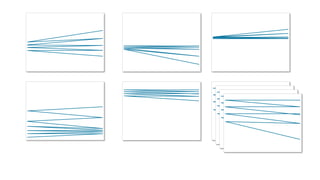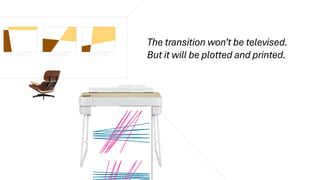Fabular Frames and the Four Ratio Problem
- 1. Fabular Frames and the Four Ratio Problem Een leeg busstation in Schuddebeurs, Zeeland. Beeld Daniel Rosenthal / de Volkskrant
- 2. Net Zero Sum Game Digital, interactive art showing the struggle of a society in providing for its present population while also saving planetary resources for future generations. Spread across several frames, the art is actually the rendering of real and speculative data. The stereographic projections change shape in response to prompts and provocations. Visitors interact with the model through speculative statements about how to increase savings across communities, regions, ecosystems and environments. Their fabulations combined with random noise, i.e. factors beyond control, have a dramatic effect on the societal transition. Things get better. Things get worse. The aim is to give visitors a new grasp and feel of the ongoing struggles in democracies around the world. Stunning art in the small multiples format brings out the spatiotemporal nature of societal transitions, against backdrop issues such as energy, housing, waste, farmland and forest. In each frame we see hopeful and frightful interplays between spending and saving. Problems emerge when one of the two parts of the existential anaglyph rapidly shrinks like Arctic ice, as factors cross thresholds. A broader, beyond-GDP concept of verdienvermogen is at play. Not enough spending could mean economic stress, social unrest and political conflict. Not enough saving and there will be climate breakdown and bankruptcy. So where does speculative design start and the gambling and betting end? Behind each fabular frame is a four-ratio problem. Each ratio reflects the level of sacrifice and self-restraint a society is willing to accept, against promises of prosperity and freedom. Some values seem to stabilise a frame while others cause collapse. Get the ratios right and we can have it all. Get them wrong and things get more desperate.
- 3. ? 2023 Structural ENOUGH OF THIS AND THAT There is ˇ®not enoughˇŻ of something or there is ˇ®too muchˇŻ of it. In between, there are thresholds of ˇ®just enoughˇŻ and ˇ®more than enoughˇŻ. The four thresholds help us have meaningful debate over choice and compromises between this and that. THIS: Not enough travel Just enough travel More than enough travel Too much travel THAT: Not enough transport Just enough transport More than enough transport Too much transport THIS: Not enough forest Just enough forest More than enough forest Too much forest Too much housing More than enough housing Just enough housing THAT: Not enough housing But we entertain ourselves or annoy each other with simplistic understandings of complex issues or fantastical arguments of how things should change, how much they should change or why some things should not change at all.
- 4. Fourcast A simple graph casting four concepts of interest that together indicate the state of a system. Concepts 1 and 2 represent choices, whereas 3 and 4 represent compromises. CONCEPT 2 CONCEPT 1 CONCEPT 4 CONCEPT 3
- 5. PRIVACY SECURITY VERIFICATION SURVEILLANCE Do we have enough security? For example, we can visualise the inherent conflict and interdependence between privacy and security, intermediated by the concepts of surveillance and verification.
- 6. FOREST BUILDINGS PARKS FARM Do we have enough housing? Or we can debate about the pressing need to rewild large expanses of land to capture carbon, across a densely populated democracy country that is also experiencing housing crisis.
- 7. ECOLOGICAL RESERVE ECONOMIC GROWTH ESCROW B Intergenerational equity At a much higher level of abstraction, we can explore the idea of two types of escrow accounts for ecological wealth, through which we could assure intergenerational equity. ESCROW A
- 8. Agriculture Housing Transport Energy It is more likely (and prudent) that we look across several frames representing interlinked problems, to speculatively design policies and programmes that have public support. Multiple frames
- 9. We could focus on a single problem and look across areas or regions. Examining local conditions and the peculiarities of regional solutions can help us better understand the problem. Amsterdam Eindhoven Rotterdam Utrecht Small multiples
- 10. 2000 2010 2020 2030 And of course, we can look across periods to see how a problem has evolved over time ¨C gotten better or worse ¨C and analyse the factors critical to change and improvement. ˇ°Arctic iceˇ±
- 11. Of course, youˇŻd be looking across a large set of frames youˇŻre the mayor of a city, a member of parliament, the CEO of a multinational ˇ ˇ anyone concerned with economic growth and growing problem of climate change.
- 12. Complicating factor Ratio 4 Co-factor Ratio 3 Key factor Ratio 1 Control factor Ratio 2 NOT X AND NOT Y X AND Y NOT X AND Y NOT Y AND X x+ x- y- y+ Four Factor Model
- 13. y+ Factor 3 x+ Factor 2 y- Factor 4 x- Factor 1 Four Ratio Problem policy action policy resistance
- 14. 1100 Trees as infrastructure? YES NO 3532 Keep fewer things in the freezer for shorter periods? YES NO 1200 Increase the speed limit from 70 km/h to 80 km/h. NO YES 1355 Build more houses in Eindhoven. YES NO 2700 Capacity limits on flights from Schiphol airport. NO YES 2061 Restaurants cannot refuse to serve tap water. NO YES
- 17. 1100 Trees as infrastructure? YES NO Vox populi Seat of power signal processor policy unit TRANSITION IN PROGRESS
- 21. The transition wonˇŻt be televised. But it will be plotted and printed.
- 22. Structural BV Orteliusstraat 230H 1056 PH Amsterdam www.strctrl.org

